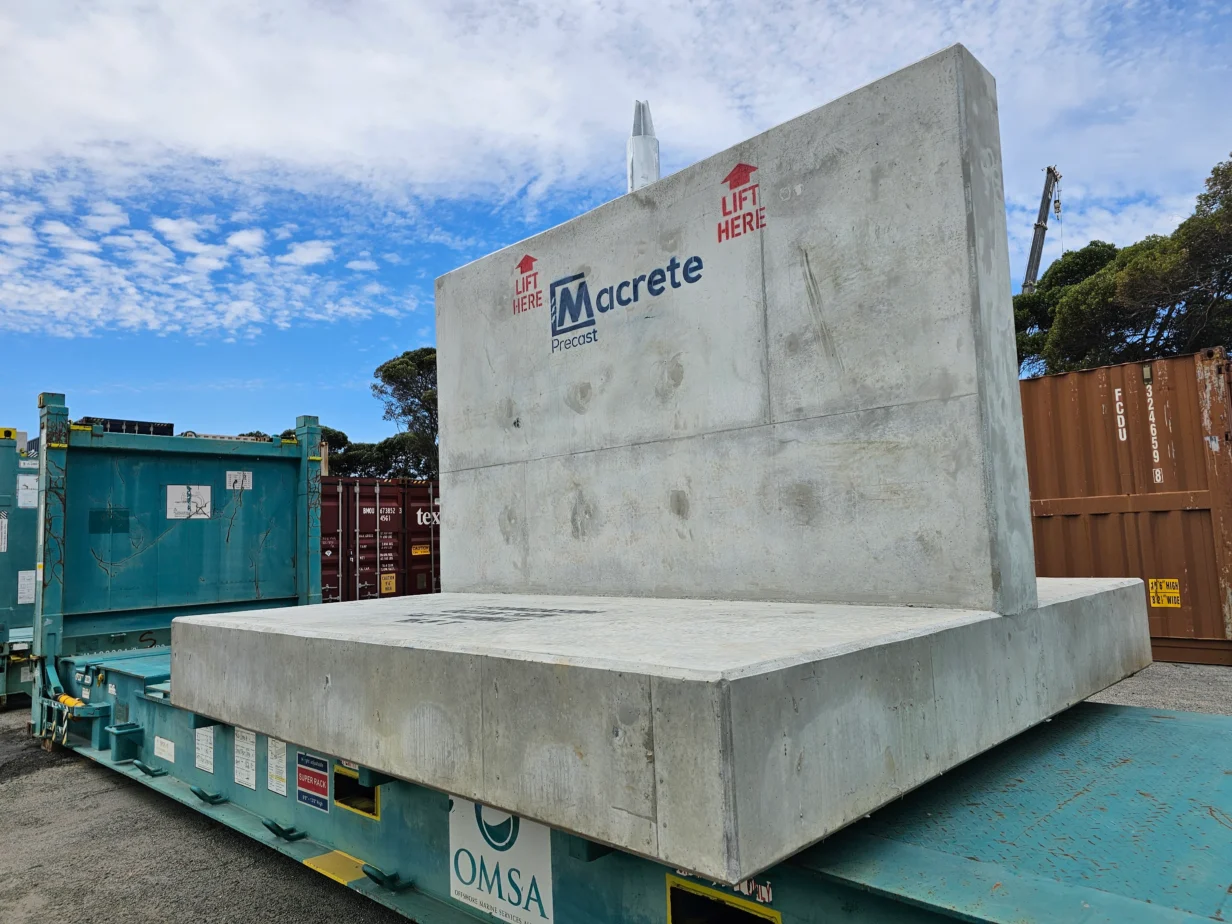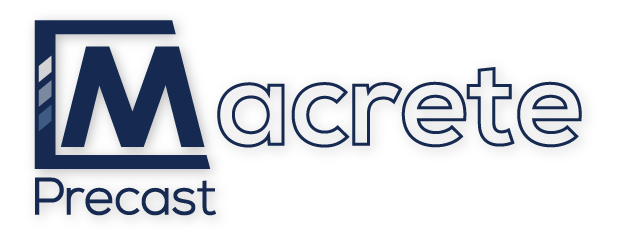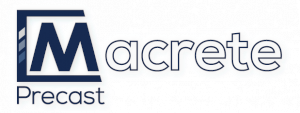
Key Australian Standards for Precast Concrete
Key Takeaways
- Australian Standards ensure precast concrete components meet national safety, strength, and performance benchmarks.
- Key standards include AS 3850 (handling), AS 3996 (load classifications), AS 3600 (structural design), and AS 5100.2 (bridge loads).
- Compliance reduces rework, safety risks, and project delays.
In Australia’s construction and infrastructure sectors, compliance with national standards is not optional, it’s essential. Precast concrete elements must meet strict specifications to ensure safety, durability, and performance throughout a project’s lifecycle.
At Macrete Precast, we understand that standards can be complex to navigate. Our mission is to simplify compliance by manufacturing fully certified, project-ready precast solutions for civil, commercial, and infrastructure applications across Western Australia.
This guide breaks down the key Australian Standards for precast concrete, explaining what they mean, why they matter, and how to ensure your next project remains fully compliant.
Why Australian Standards Matter for Precast Concrete
Australian Standards (AS) provide a consistent national benchmark for materials, design, and performance in construction. When it comes to precast concrete, these standards:
- Proper handling, lifting, and load design prevent accidents and structural failures.
- Standards specify concrete strength, reinforcement quality, and long-term performance.
- Meeting AS requirements is a condition for most public infrastructure and commercial projects.
- Adherence reduces costly rework, testing failures, and on-site delays.
Every stage of a precast project, from design and reinforcement selection to lifting, transport, and installation, is guided by one or more Australian Standards.
Key Australian Standards for Precast Concrete
AS 3850 – Prefabricated Concrete Elements
Focus: Lifting, handling, and installation.
AS 3850 governs the safe manufacture, lifting, and installation of prefabricated (precast) concrete elements. It covers lifting inserts, rigging systems, and on-site placement, ensuring components can be safely handled without compromising structural integrity.
For contractors and engineers, AS 3850 is essential for minimising risk during transport and erection. Macrete’s production process strictly follows AS 3850 guidelines, with full lifting design documentation available for every unit.
AS 3996 – Access Covers and Grates
Focus: Load classifications for covers, frames, and grates.
AS 3996 specifies load-bearing classifications (A–G) for access covers and grates used in roadways, pathways, and drainage systems. When manufacturing precast pits and lids, compliance with AS 3996 ensures components can safely handle the intended traffic loads.
Macrete’s access covers are engineered and tested to meet relevant AS 3996 load classes, offering reliable performance across civil and infrastructure applications.
AS 3600 – Concrete Structures
Focus: Design and performance requirements.
AS 3600 is the overarching standard for concrete structures in Australia. It defines design parameters for strength, serviceability, durability, and fire resistance. All precast concrete design and reinforcement calculations should align with AS 3600 to guarantee long-term structural integrity.
AS 5100.2 – Bridge Design (Design Loads)
Focus: Bridge and civil infrastructure load design.
AS 5100.2 specifies live and dead load requirements for bridge elements and heavy civil structures. For precast bridge beams, panels, and culverts, compliance ensures each unit can withstand vehicle, pedestrian, and environmental loads as part of the wider structure.
Macrete’s civil precast components are designed in accordance with AS 5100.2 to meet state and local authority requirements for infrastructure projects across Western Australia.
AS/NZS 4671 – Steel Reinforcing Materials
Focus: Reinforcement standards.
This standard outlines the specifications for steel reinforcement used within precast concrete elements. It ensures consistency in yield strength, ductility, and weldability, which directly impact the performance and safety of the finished structure.
Macrete sources reinforcement only from certified Australian suppliers that meet AS/NZS 4671 standards, ensuring traceable, compliant reinforcement in every project.
AS 1012 – Methods of Testing Concrete
Focus: Testing and quality control.
AS 1012 defines standardised methods for testing concrete’s compressive strength, workability, air content, and other key properties. These tests form part of any credible precast quality assurance program.
At Macrete, all mix designs undergo regular AS 1012 testing through third-party laboratories, providing complete transparency and documentation for clients.
Macrete’s Commitment to Australian Standards
At Macrete Precast, compliance isn’t an afterthought. it’s built into every product we manufacture. Our processes include:
- Full adherence to AS 3850, AS 3600, AS 5100.2, AS 3996, and other applicable standards.
- In-house QA systems aligned with ISO 9001 principles.
- Independent testing through NATA-accredited laboratories.
- Comprehensive documentation, including test reports and lifting certificates.
From custom bridge beams to access pits and retaining walls, every Macrete product is engineered for compliance, performance, and longevity.
Build with Confidence
Navigating Australian Standards for precast concrete can be complex, but compliance doesn’t have to be difficult. Working with a trusted, certified supplier like Macrete Precast ensures your project meets all national requirements, avoids costly delays, and delivers lasting results.
Contact Macrete Precast today to discuss your next compliant precast solution for civil, commercial, or infrastructure projects across Western Australia.
FAQs
What are the main Australian Standards for precast concrete?
Key standards include AS 3850, AS 3996, AS 3600, AS 5100.2, AS/NZS 4671, and AS 1012, covering design, testing, lifting, and compliance.
Why is AS 3850 important for precast concrete elements?
AS 3850 ensures safe handling, lifting, and installation of precast components, minimising the risk of damage or accidents on-site.
How does AS 5100.2 apply to bridge precast components?
AS 5100.2 outlines load requirements for bridges and heavy civil works, ensuring precast beams and panels can safely handle expected traffic loads.
What does AS 3996 cover in precast concrete applications?
AS 3996 defines load classes for access covers and grates, ensuring they can withstand pedestrian or vehicular traffic depending on their installation environment.
How can I ensure my precast supplier meets Australian Standards?
Check for certification, request QA and testing documentation, and confirm that their manufacturing processes align with relevant AS requirements.
What certifications should a precast concrete manufacturer have?
Look for ISO 9001 certification, NATA-accredited testing partnerships, and documented compliance with all applicable Australian Standards.


No Comments